Affiliate links on Android Authority may earn us a commission. Learn more.
GravityBox, the Xposed module to rule your rooted device - Android customization
Published onFebruary 11, 2016
Continuing our efforts learning some basic root tools to better control your device, this week’s Android customization finishes off our initial set of Xposed modules, let’s take GravityBox for a spin. As one of the most robust Xposed modules around, GravityBox does a lot more than just a task or two like the modules we’ve previously explored.
Before we begin
As always, you will need a fairly modern Android device running a stock version of Android, it will need to have been rooted, custom recovery and Xposed flashed to it and the Xposed Installer installed and ready to roll. I’ll put a link to instructions on these tasks below.
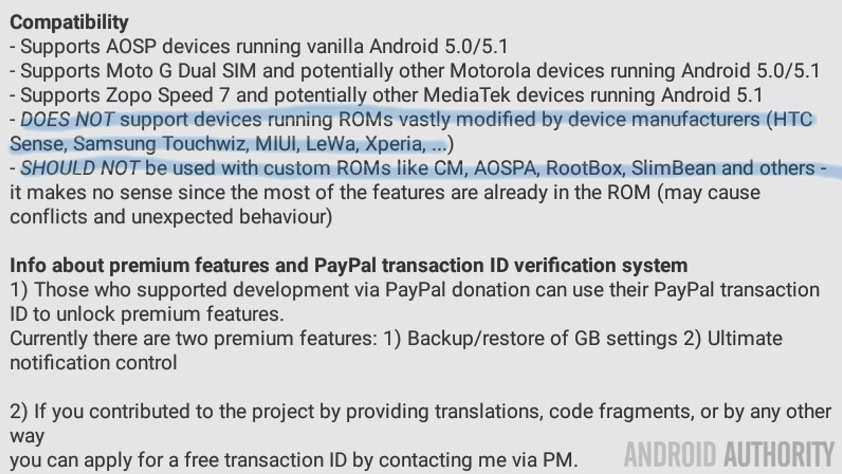
Once inside Xposed on your device, search for and install the appropriate GravityBox for your device. Please take careful note of which version of Android you have installed, as you can see, my Nexus 7 is running Lollipop, there is a specific version of GravityBox for Android 6.x Marshmallow – I don’t want to explain it here, but it matters which you choose.
Rooting your device, a few things to think about
Xposed module and installer basics
GravityBox for Marshmallow now available
GravityBox, an overview
So, what’s the big deal with this GravityBox I keep talking about? Truth is, there are smaller apps and modules to perform almost every feature found in GravityBox, but you’ll be hard pressed to find one that does it all the way GravityBox can.
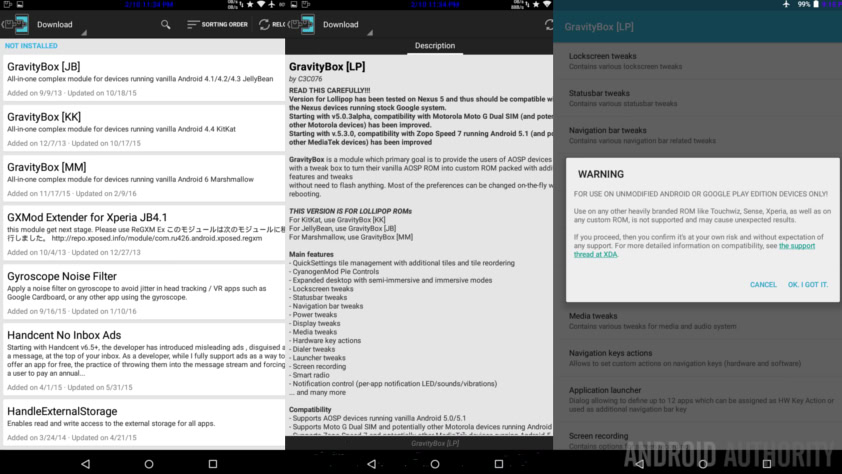
As a brief overview, GravityBox can control most aspects of your notification bar, the notification drawer, quick settings, navigation bar, power options and controls, audio options and controls, add extra navigation bars and functions, add physical keyboard hotkeys for specific apps, tweak phone settings, tweak display settings and a few more cool features. Bottom line, if you want to play around with the visual layout of the operating system pieces, GravityBox is your one-stop-shop of fun.
GravityBox is free, but there is an option to support the developer in exchange for some extra functionality. Primarily, you’ll be able to backup and restore your GravityBox settings, which can be hugely useful if you often reset your device.
We will likely play with GravityBox more than once in this customization series, but for today, let’s look at a couple easy examples.
Relocate your clock and add a network utilization indicator to your notification bar
It will be easy to tackle both of these settings in very short order, but let’s start with the clock before moving to the network usage indicator.
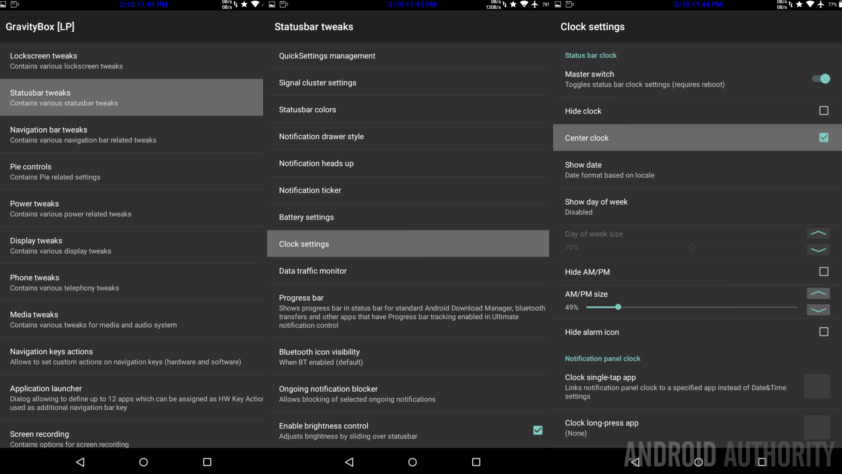
With GravityBox installed, head on in and tap on Statusbar tweaks.
Half way down the page is the option for Clock settings, tap on it.
The third option in the list is a toggle called Center clock. You’ll never believe what it does! Go ahead, turn it on.
Look at that, there are a ton of other settings you can play with, but we’ve accomplished our goal for today.
Now it’s time to add that network utilization indicator to the notification bar. This is almost as easy as the clock to manage. If you’ve just finished tweaking the clock, you can back up one screen to get to the Data traffic monitor, but let’s start from the beginning again, it’s easy enough.
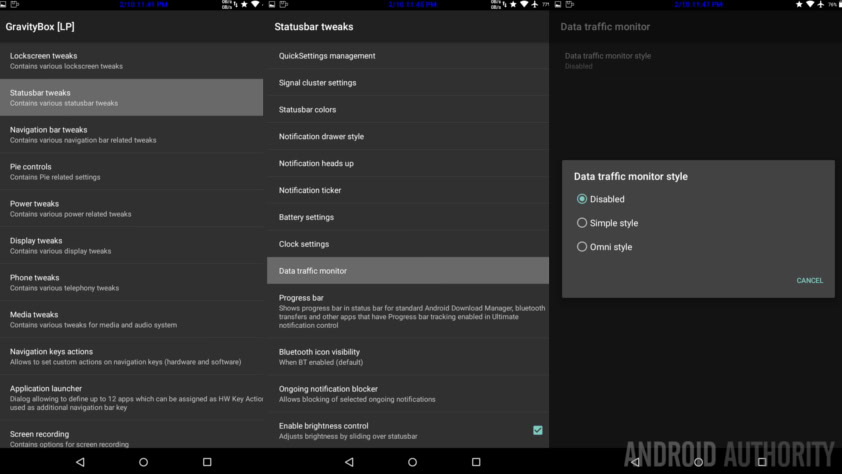
In GravityBox, tap on Statusbar tweaks.
Choose Data traffic monitor.
Tap on Data traffic monitor style and choose either Simple Style or Omni style.
Simple style adds a single data usage metric, I’ve opted for Omni style, which shows independently the values for incoming and outgoing data – that is, your current download and upload speeds.
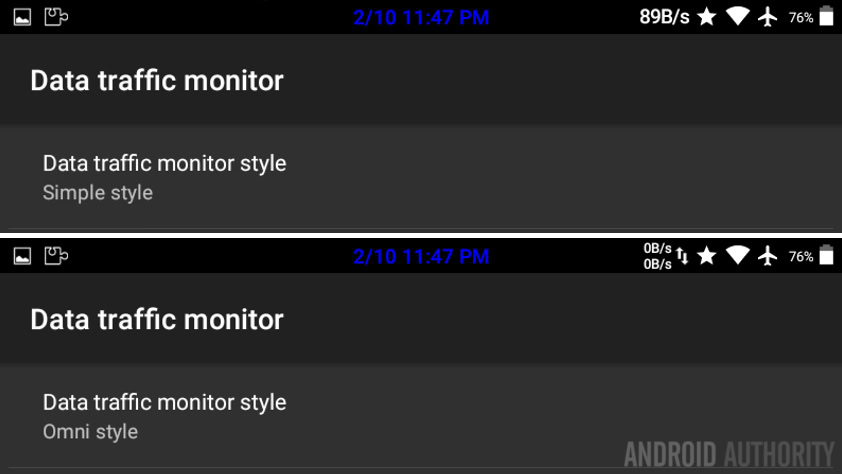
Once again, there are a handful of cool extras you can play with, but we have accomplished our goal for now.
What’s next
As you likely noticed, we explored only two small tools of one small aspect of GravityBox. Making simple changes to the clock and adding a network utilization indicator are great examples of the power of this root tool, we look forward to exploring more in the future.
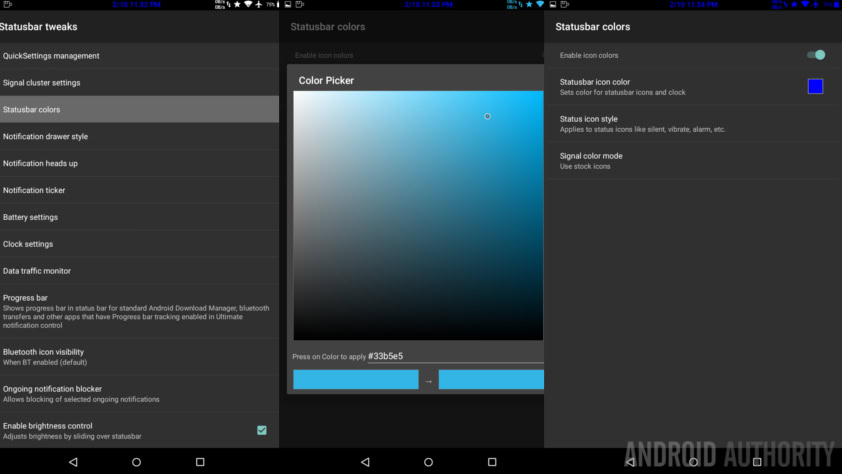
Before you back out completely, did you notice that you can change the Statusbar colors? That’s right, one of the other Xposed modules we’ve played with, called Clockhex, allowed us to change the color of the clock, Simply tap into Statusbar colors and change all of the system status icons and text to a new color. A small thing, sure, but this is a level of customization that inspires me to continue this series, these things are why I Android.
Next week
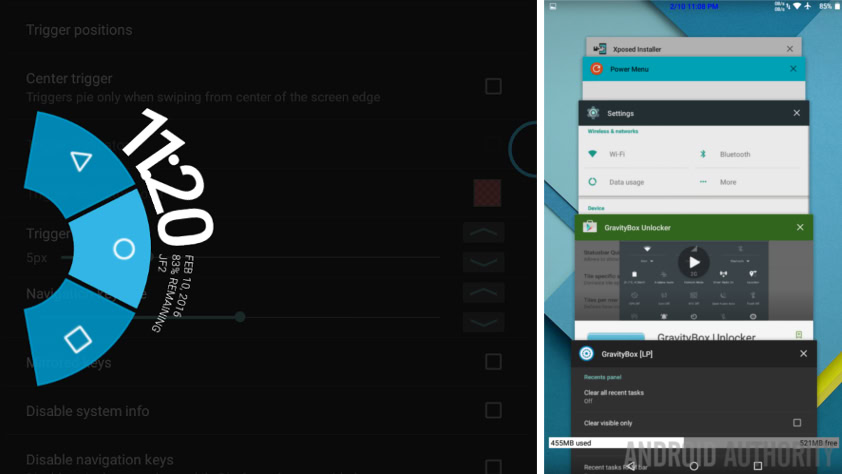
If you are not brave, rest assured we will revisit GravityBox again in the future, there is so much it can do, we may not even install Tasker on this device. Next week on our Android customization series is again up in the air, I am still working on a few cool Android wear ideas, but if I can’t get them together, we’ll look at a few more fun and useful GravityBox tweaks.
What do you say, is there any one small thing on your Android device that you’d like to see changed? If so, let’s see if GravityBox can do it for you.
More Android customization projects: